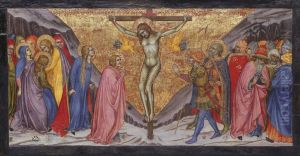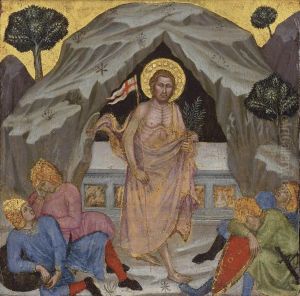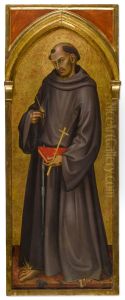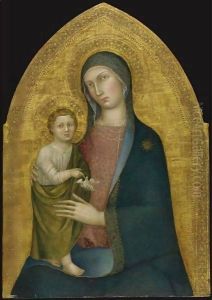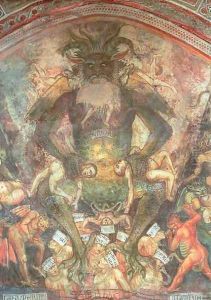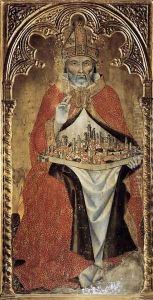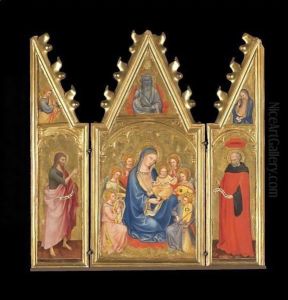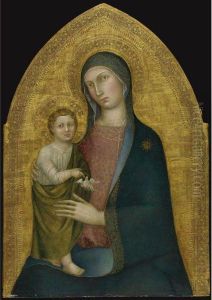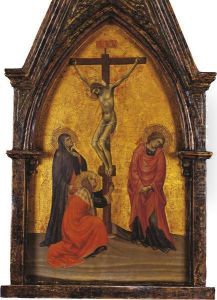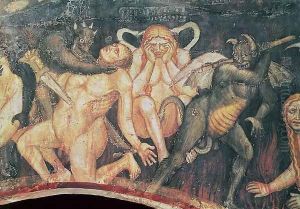Taddeo Di Bartolo Paintings
Taddeo di Bartolo, also known as Taddeo Bartoli, was an Italian painter of the Sienese School during the late 14th and early 15th centuries. He was born around 1363, and his work is representative of the Gothic style that was prevalent in Siena and throughout Italy during this period. Taddeo's art is characterized by its vivid color, elaborate decoration, and the delicate pious figures that were common in the religious-themed art of the time.
Taddeo was apprenticed to his uncle, the renowned Sienese painter Andrea di Bartolo, and his early work reflects the influence of his uncle as well as that of other prominent Sienese artists such as Simone Martini and the Lorenzetti brothers. Over time, Taddeo developed his own distinctive style, which combined the traditional Sienese attention to detail with a more expressive approach to character and narrative.
Throughout his career, Taddeo worked on numerous commissions for altarpieces, frescoes, and other religious artworks. One of his most significant commissions was the decoration of the Palazzo Pubblico in Siena, where he painted a series of frescoes depicting the life of the Virgin Mary. He also worked in Pisa, Perugia, and Assisi, where he contributed to the decoration of the Basilica of Saint Francis.
Taddeo's work had a considerable influence on the development of Sienese painting, and his students and followers helped to disseminate his style throughout the region. Unfortunately, many of his works have not survived to the present day, while others have been damaged or heavily restored, making it difficult to fully assess his contribution to the art of his time. Taddeo di Bartolo passed away in 1422, leaving behind a legacy that would continue to inspire Sienese artists for generations.


